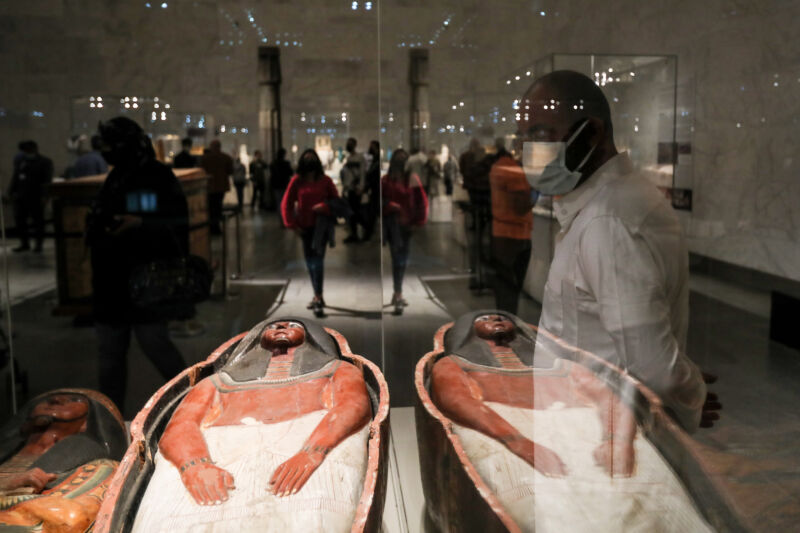The thorny ethics of displaying Egyptian mummies to the public

Enlarge / A visitor looks at displayed artifacts at the National Museum of Egyptian Civilisation (NMEC) during its official reopening a day after the Pharaohs' Golden Parade ceremony, a procession held to transport the mummified bodies of 22 ancient Egyptian kings and queens from the Egyptian Museum to their new resting place at the NMEC. (credit: Gehad Hamdy/picture alliance via Getty Images)
In 1823, the chief surgeon at Massachusetts General Hospital, John Warren, prepared to autopsy a 2,500-year-old corpse. Warren figured examining the Egyptian mummy-a gift from a patron that had been placed in the hospital's surgical ward to collect quarters from gawkers-would advance knowledge of the ancients. He carefully began cutting through the old linen, and then stopped. He had exposed a blackened but exquisitely preserved head: high cheekbones, wisps of brown hair, gleaming white teeth. As Warren later recounted, this was a person, and being unwilling to disturb" him further, he stopped there.
Fast forward to last October, when the press was on hand as Egyptian archaeologists opened the first of a cache of 59 recently discovered mummies for the whole world to see, revealing a perfectly wrapped body. Video of the event went viral, and the Twitter pushback followed: Even in death POC can't escape the prying and opportunistic advances of white people," wrote one user, in a tweet that gained nearly a quarter-million likes.
The question of whether it is unseemly, ghoulish, disrespectful, or even racist to display ancient corpses, or whether it's a noble contribution to science and education, has nagged mummy displays since Warren took up his scalpel nearly 200 years ago. And the Black Lives Matter movement's focus on issues of cultural ownership and appropriation has only added fuel to a persistent ethical dilemma for museums and experts who study mummies.
Read 26 remaining paragraphs | Comments